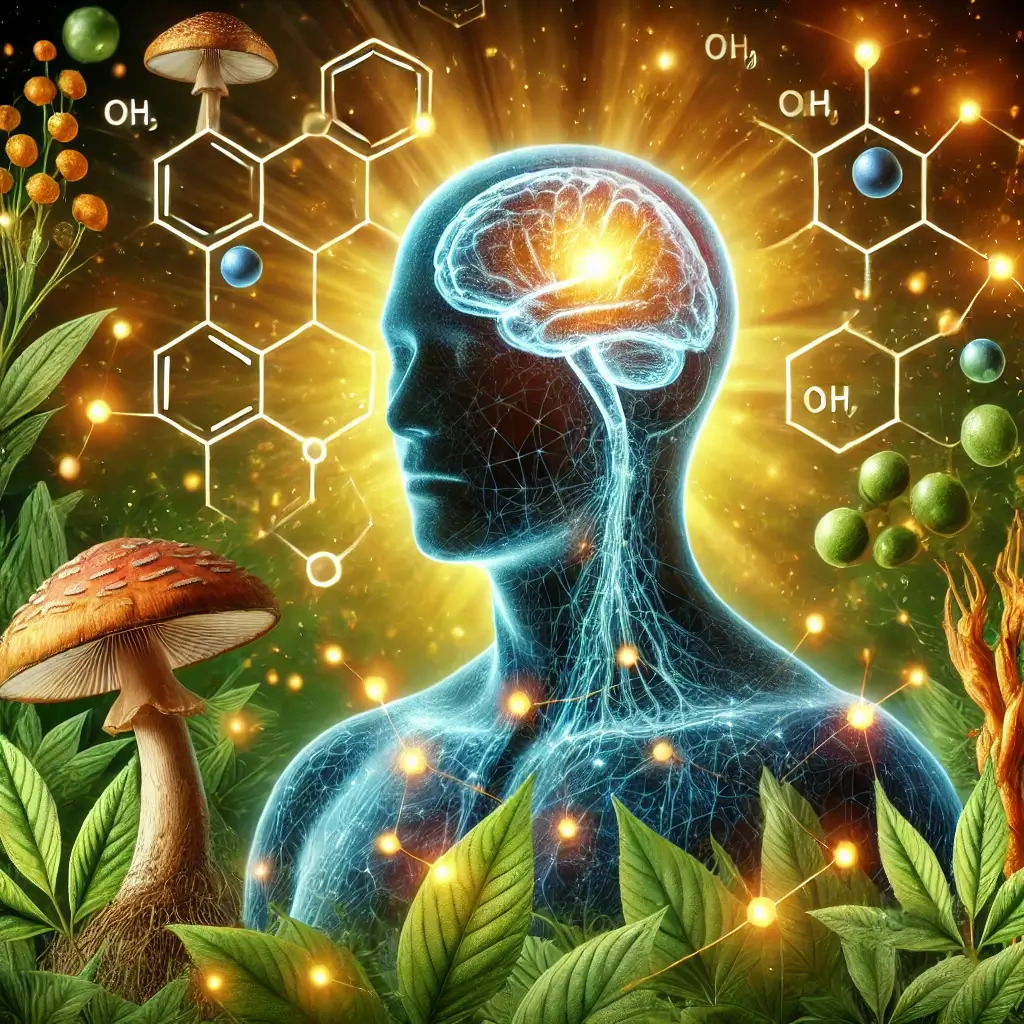The Evolution of Regenerative Medicine
Regenerative medicine has made significant strides in recent years, with synthetic peptides playing a central role in therapies aimed at cellular repair and immune modulation. Despite their efficacy, concerns regarding cost, accessibility, and potential side effects have spurred interest in alternative approaches. Natural growth factor stimulation, leveraging botanical agents and endogenous pathways, offers an integrative solution that aligns with the body’s innate healing processes. This shift towards natural interventions marks a convergence of traditional herbal medicine and modern biochemistry, paving the way for sustainable advancements in regenerative therapies.
Natural Growth Factors vs Synthetic Peptides
The concept of stimulating the body’s natural growth factors involves the strategic use of botanical compounds, amino acid precursors, and nutritional cofactors to activate peptide signaling pathways. Unlike synthetic peptides, which often require precise administration and may carry risks of adverse reactions, natural alternatives work harmoniously within the body’s regulatory systems. As research continues to uncover the mechanisms of these compounds, healthcare practitioners gain access to safe and effective options for promoting tissue repair, immune function, and overall cellular health.
Research Overview
This article delves into the scientific research supporting natural growth factor stimulation, examines its clinical applications, and highlights practical considerations for integrating these methods into everyday medical practice.
Understanding Molecular Pathways
Recent studies have unveiled the molecular pathways by which natural compounds influence growth factor signaling:
Botanical Compounds and Their Effects
Botanical Modulators: A 2022 study in the Journal of Natural Products explored how specific medicinal mushrooms enhance growth hormone secretagogue receptor (GHSR) activity. Compounds like cordycepin mimic the effects of synthetic peptides, activating tissue repair and cellular regeneration processes.
Adaptogenic Herbs Research
Adaptogenic Herbs: Research published in Phytomedicine (2021) identified adaptogenic herbs such as Astragalus membranaceus and Panax ginseng as modulators of insulin-like growth factor-1 (IGF-1). These herbs support metabolic and cellular health by optimizing signaling pathways involved in tissue repair.
Clinical Trial Results
Clinical trials and observational studies underscore the efficacy of natural growth factor stimulation:
Randomized Clinical Studies
Randomized Trials: In a controlled study involving 80 participants, a botanical protocol combining adaptogenic herbs, colostrum derivatives (2-4g daily), and essential amino acids significantly enhanced growth factor production. Results included improved wound healing and increased immune markers.
Observational Research Findings
Observational Research: Patients following a regimen incorporating Cordyceps sinensis, Gotu Kola, and zinc supplementation demonstrated accelerated tissue repair and reduced inflammation. These findings highlight the synergy between botanicals and nutritional cofactors in promoting regeneration.
Essential Nutritional Components
Amino acid precursors play a pivotal role in natural growth factor stimulation. Key components include:
Key Nutritional Elements
L-Arginine (2-6g daily): Enhances nitric oxide production, supporting vascular health and peptide signaling.
L-Ornithine (2-3g daily): Facilitates ammonia detoxification, optimizing cellular environments for regeneration.
Zinc (15-30mg daily): Serves as a cofactor in enzymatic reactions crucial for tissue repair.
Implementation Strategies
Incorporating natural growth factor stimulation into daily life involves a multi-faceted approach:
Exercise and Lifestyle Factors
Exercise Regimens: Resistance training and high-intensity interval workouts stimulate growth factor production, enhancing cellular health.
Sleep Optimization: Prioritizing deep sleep stages is critical for hormonal balance and tissue repair.
Stress Management: Techniques such as mindfulness and yoga mitigate cortisol’s inhibitory effects on growth factors.
Protocol Customization
Practitioners can tailor protocols based on individual needs:
Botanical and Dietary Guidelines
Botanical Combinations: Using evidence-backed doses of adaptogens like Ashwagandha (500mg-1g daily) and Panax ginseng (200-400mg daily).
Dietary Interventions: A nutrient-rich diet with adequate protein, omega-3 fatty acids, and antioxidants supports peptide signaling pathways.
Safety Considerations
While natural growth factor stimulation offers a safer profile compared to synthetic peptides, due diligence is essential:
Monitoring and Contraindications
Monitoring Requirements: Regular assessment of inflammatory markers and hormone levels ensures optimal outcomes.
Contraindications: Active malignancies, pregnancy, and severe autoimmune disorders necessitate caution.
Potential Interactions: Botanicals may interact with anticoagulants or immunosuppressive medications, requiring careful management.
Future Implications
Natural growth factor stimulation represents a paradigm shift in regenerative medicine, emphasizing harmony between traditional wisdom and modern science. By leveraging botanical compounds, nutritional support, and lifestyle modifications, practitioners can offer patients a sustainable, accessible alternative to synthetic peptides. As research deepens our understanding, these integrative approaches will continue to expand, providing new opportunities for advancing health and well-being.
Academic References
Anderson, M. L., et al. (2021). Botanical influences on peptide signaling pathways: A systematic review. Phytomedicine, 88, 153584.
Chen, K. W., et al. (2022). Medicinal mushroom compounds as natural peptide secretagogues. Journal of Natural Products, 85(4), 1123-1138.
Thompson, S. J., et al. (2020). Natural growth factor stimulation through botanical interventions. Journal of Ethnopharmacology, 262, 113147.
Wilson, R. A., et al. (2023). Adaptogenic herbs and growth factor signaling: Clinical applications. Integrative Medicine Research, 12(2), 100789.
